






Hi there and welcome to Ado's Blog. I am obsessed with nostalgia, especially 1960s & 1970s nostalgia and I enjoy nothing more than reflecting on days and times that have sadly long since gone! So join me, as I take a nostalgic gander down Memory Lane and celebrate all things past and occasional present, both good and bad! (All images used that are copyrighted are copyrighted to their respective publishers and are only used here for review purposes.)







Tiger Bay (d. J. Lee Thompson, 1959) is more romantic and dramatic than realistic, more traditional than the uncompromising, radical departure of the films of the British New Wave. It is in some ways a transition: both traditional and modern, but not exactly social realism. It was ahead of its time in showing aspects of life not usually displayed in film in the 1950s, but limits these insights to brief glimpses.
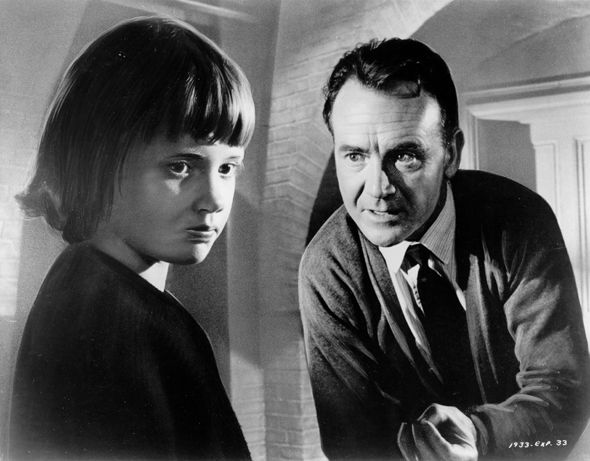
Nonetheless, the film is occasionally powerful in dealing with contemporary issues, notably sexual equality. In the brief time before she is murdered, Anya (Yvonne Mitchell) is inspiringly feminist; with some surprisingly modern lines: "Just because you helped me once, is that a life sentence? I'm not an animal for a little boy to keep in a cage; I'm a woman, a woman with a heart and a body which is my own to give how I like, when I like."

Tiger Bay is also unusual in its treatment of kids, taking them seriously - their culture, the way they play, the way they think, what they take seriously. Child star Hayley Mills made her screen debut - aged twelve - as the young girl who befriends troubled drifter Bronik (Horst Bucholz).
The film is beautifully observed in its depictions of life on its decaying, Dickensian stairways; other locations are equally well chosen. It also offers a tantalising, but again frustratingly brief, glimpse of the rich multiracial culture of Cardiff's docklands. Like A Taste of Honey (d. Tony Richardson, 1961), it has a fascination with what would soon become industrial archaeology: the crumbling but ingenious cranes, mobile bridges and industrial landscapes of Britain's merchant maritime past.

Tiger Bay is representative of the pinnacle of traditional black and white cinematography, with every scene and shot beautifully lit and composed. Sumptuous in its appearance, it does not yet show the kind of experimental black and white photography (fast film stocks, greater use of natural light) found in A Taste of Honey
Volume 26, No.304, May 1959, page 57
A young Polish seaman, Korchinsky, returns to Tiger Bay to find that his girl, Anya, is no longer interested in him. Their violent quarrel, ending in Anya's death, is watched by Gillie, a lonely little girl. She steals Korchinsky's gun, lies to Police Superintendent Graham about the murder, and shows off her new gun to an impressed choirboy. By the time Graham has heard the choir-boy's story, Gillie has disappeared. Although Korchinsky's motive in kidnapping the child is one of self-preservation, a warm rapport springs up between the two, and when Korchinsky leaves Gillie in hiding, she promises to stay there until evening, by which time he will be aboard his ship. Gillie is found, however, and trapped by Graham into incriminating Korchinsky, and the police take her aboard his ship while it is still within the three-mile limit. Gillie steadfastly refuses to identify Korchinsky, and it seems as though he will go free when Gillie suddenly falls overboard. Korchinsky dives in and saves her at the cost of his own liberty.
Modelled on Hunted (by The Yellow Balloon out of The Window), this cut to pattern thriller has an unusually good script and the sense to give it its head. The plot hinges on the touching relationship between the loyal, tomboyish child and the kidnapper who begins by thinking of killing her and ends up saving her life; and its principal merit is a steadily mounting suspense, carrying complete involvement without once becoming dishonest, either in character or construction. No attempt is made to elaborate the characters beyond the demands of the story, and they are appealingly presented. Apart from a jarring scene of overcalculation when she throws herself bodily into a description of the murder, Hayley Mills is splendid as the child; Horst Buchholz, assured and extrovert as the young Pole, gives promise of exceptional sensitivity into the bargain, and in a brief and thankless part John Mills plays the hunter with just the right discretion and suggestion of sympathy. Lee-Thompson's direction, less happy in the early scenes of murder and first encounter, is otherwise craftsmanlike, with a good use of locations and above all a firm feeling for outcasts and foreigners, their solidity and their background. All in all, this is the most entertaining Rank release in quite a while.
The song was written by Horn, Geoff Downes and Bruce Woolley Horn has claimed that Woolley was primarily responsible for the musical content, while Horn wrote most of the words. Woolley was responsible for the addition of the words 'put the blame on VTR'. The first version was recorded by Woolley & the Camera Club (with Thomas Dolby on keyboards) for his albumEnglish Garden, which was a hit in Canada. The Buggles later recorded the song and it reached number one in the UK Charts the week of 20 October 1979, the first-ever number one for the island records label. It also would top the Australian charts, and made the Billboard hot 100 in the United States, debuting on 10 November 1979, and peaking at number 40.
It appears on the album The Angel of Plastic, where it has an additional piano coda. The complicated arrangement and production of the song, which includes a chorus sung by a group of very high-pitched backup singers, foreshadows Horn's later career as a producer. It appears on the soundtrack for Grand Theft Auto: Vice City and in the game itself.
| "Video Killed the Radio Star" | ||||
|---|---|---|---|---|
 | ||||
| Single by The Buggles | ||||
| from the album The Age of Plastic | ||||
| B-Side | "Kid Dynamo" | |||
| Released | 7 September 1979 | |||
| Format | 7" | |||
| Recorded | 1979 | |||
| Genre | New Wave, Synthpop | |||
| Length | 4:13 (album version) 3:25 (2010 Japanese re-issue single version) | |||
| Label | Island | |||
| Writer(s) | Geoff Downes, Trevor Horne, and Bruce Woolley | |||
| Producer | The Buggles | |||
| Certification | Gold (UK) | |||
| The Buggles singles chronology | ||||
| ||||









Sidney Abbott is played with all the brilliant comic talent you would expect from Sid James. He is a sales representative for a local stationary company and is very successful at his job. Outside of work, he likes to relax (or try to!) at home smoking his pipe listening to his favourite classical piece of music, at weekends he would sometimes go fishing with his next-door neighbour who is also his best mate Trevor (played by Anthony Jackson). Sid's most popular activity is going to his local boozer The Hare and Hounds with Trevor to sink a few pints and discuss the burning issues of the day eg. would Chelsea win the cup this year, or the length (or lack of it) of the barmaid's skirt! The main cause of frustration in Sid's life is trying to understand his children. The generation gap seems to him to be not so much a gap as (perhaps he might say) a great big bloody hole! He holds very traditional views on many things especially sex, and while he encourages his son Mike to enjoy himself (as quoted on the show Here a bit, there a bit, everywhere a bit bit!) he is very protective about his daughter Sally whom he still thinks of as his little girl.



Jean Abbott, played by Diana Coupland, is a devoted wife and mother, she is the 'real' head of the house, but dont tell Sid! She seems to understand her children more than Sid ever could, usually seeing their side of any argument. Her best friend is next-door neighbour Betty (played by Patsy Rowlands) who is married to Trevor. Sid is not too keen on her as she always seems to be coming round to borrow things which usually is food!
Mike Abbott, played by Robin Stewart, is the oldest of the two children and the most gifted but Sid would disagree with you on that one! He is unemployed but occasionally sells pieces of art which he has made. Art is his passion and he is always working on his next masterpiece which unfortunately for Sid usually means a lot of banging and clattering from the garage which never seems to have the space for the car! Sid also struggles to hold a decent conversation with his son as he uses phrases such as Dig it and I'm gonna split which sounds very painful! Sally Abbott, played by Sally Geeson, is the youngest member of the family but she is rapidly growing up. Her attitude to sex leaves her father in turmoil, and she seems to go through boyfriends like there is no tomorrow. Mike and her have very strong opinions and they often go on various demonstrations together in support of the latest cause, this usually ends up with them in trouble with the police which means a trip to the station for Sid!



As with any successful sitcom of the 1970's there was a good chance that a spin-off feature film would be made and Bless This House was no exception. Made in 1972 by Rank, the screenplay was written by Dave Freeman who had also penned scripts for the TV series, producer was Peter Rogers and director was Gerald Thomas who of course had both worked on the immensely successful Carry On films. The film retained most of the regular cast from the TV series with the exceptions of Robin Stewart as Mike who was replaced by Robin Askwith, and Anthony Jackson as next-door neighbour Trevor who was replaced by carry on stalwart Peter Butterworth. There was a good supporting cast of many familiar faces from the British comedy scene of the time including Terry Scott and June Whitfield as the new next-door neighbours Mr & Mrs Baines, George A Cooper as the propietor of a local cafe and Bill Maynard as the owner of an antiques market.



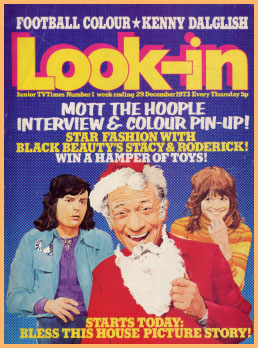
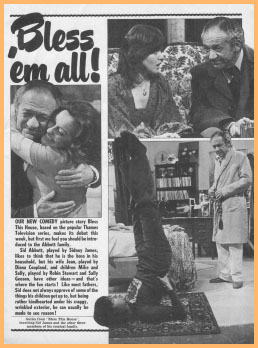
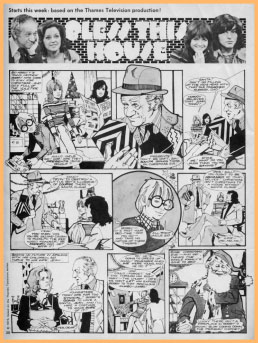
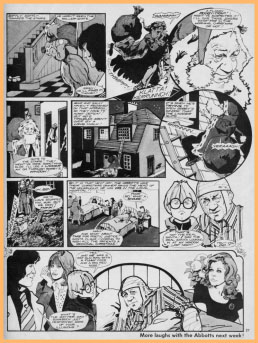
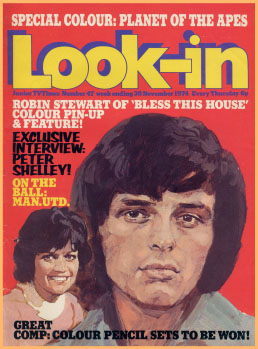
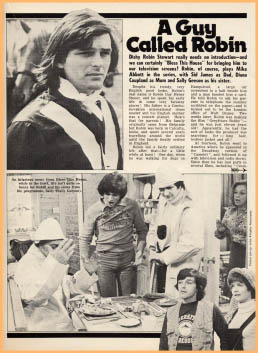












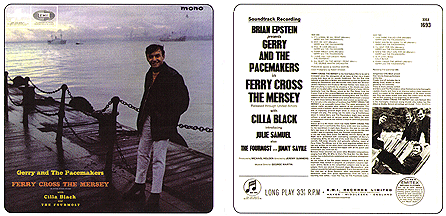
| "We do numbers in all sorts of odd places - in one scene we’re invited to a house in which we find an antiquated guitar, a piano, an old drum and a harp. We begin to play them and I play the harp as if it were a double-bass. After we’d finished filming the scene, an actor who plays the part of a butler came up to me and said ‘I like your group, it’s a unique idea to have a harp in a rock group.’ I didn’t dare tell him I play bass!” United Artists released the film in Britain in January 1965 as part of a double bill with ‘For Those Who Think Young.’ At the same time, Columbia issued a 12-track soundtrack album which featured nine original numbers penned by Gerry Marsden, an instrumental ‘The Liverpool Scene’ by the George Martin Orchestra and songs from The Fourmost and Cilla Black. One woman, interviewed in the newspaper Mersey Beat following her visit to see the film at a local cinema commented, “It’s just like a look into hell.” Gerry answered, “I hope to do a horror film and she can play a witch!”  The Synopsis: Ecstatic squeals of teenage girls pack Manchester Airport as a Boeing 707 returns Gerry and The Pacemakers from an American tour. Fans crush round their two chauffeur-driven Rolls-Royces, which finally draw away taking Gerry and the boys to a recording studio. There, after a tousled girl has been extracted from the boot, Gerry and The Pacemakers start cutting a new disc. Flashback: A voice introduces “Liverpool and the Mersey….” Gerry and his group have not yet been discovered, but at the Cavern Club they are already setting the pace with their own screaming following of kids each night. Gerry is the scourge of a respectable guest house, run by his aunt, Mrs Taggart, whom he affectionately calls Aunt Lil. His fellow-boarders are Lumsden, an undertaker who wishes Gerry was underground and a genteel spinster, Miss Kneave, who veers between giggles and frigid shock. Gerry leaps on to his Lambretta and heads for the Mersey ferry and Art School across the water. Already on board are Chad, Les and Fred, and before long the group is working out a competition number that has the boat rocking. They split up on the other side of the river. Fred and Les make for the Glossbrite Sanitary Fitment Co. Ltd., where they work, while Gerry and Chad go off to the Liverpool College of Art. At the art school Dodie awaits; a pretty young blonde who reckons Gerry is the gear. Above all she wants him and the boys to win the competition being run to find the Merseyside group that will compete in the European Beat Group Contest. As the students drift in, it’s plain that Gerry is stuck on Dodie too. The class begins under the stern eye of the art master, Trasler, and not until he leaves the room does Gerry get the chance to lay down his brush for a guitar and start the joint jumping again.  Waiting on the college doorstep is Mojo, a stray dog who has adopted Gerry and accompanies him to the Yung Wah Chinese Restaurant to meet the rest of the Pacemakers for lunch. The chopsticks are an irresistible temptation to drummer Fred and Les is drawn helplessly to the keyboard of a conveniently parked piano as another number starts. A lively bunch of youngsters quickly surround the boys and even the manager enjoys the scene, although he has a hard time keeping his staff in the kitchen. Later that day Dodie calls on Hanson, an agent, and asks him to come and hear the group at the Glossbrite Sanitary Fitment Co. warehouse that evening. So, amid the baths and washbasins, Gerry and the boys get the big beat going and the warehouse girls screaming. At the end of the number they find they have an agent to enter them for the contest. They also have their first autograph hunters. After wishing a fond goodnight to Dodie, Gerry goes home to Aunt Lil – and a very different kind of music. The soiree is hilarious with Gerry on a wooden bird-caller breaking it up in disorder. Gerry retreats to his room, soundproofs the door with padding, and listens in peace to his transistor radio. First thing next morning a message from Dodie arrives, which Aunt Lil hurries up to Gerry. Finding the door sealed, she and Lumsden panic, their imaginations running riot for a moment, and the undertaker forces the door, but Gerry is very much alive and soon on his way to Dodie with the other Pacemakers.  Dodie’s father, Colonel Dawson, is a shipping magnate with a luxurious mansion outside Liverpool. A supercilious butler ushers the boys into the music room, but as soon as they begin practicing their song for the contest they have the maids shaking and the butler almost managing a smile. On the day of the contest, agent Hanson takes the boys to a music shop to buy them new instruments. Once again, the Pacemakers’ sound draws a crowd of youngsters that multiplies and spreads over the street until the traffic snarls to a halt. Reluctantly, Lumsden hires out a mourner’s limousine to Gerry and the boys. After joining a passing funeral, then becoming involved in various mishaps, it gets them to the competition ballroom just in time. The dance floor is packed tight, and Gerry’s own fans are there too. The other entries are greeted enthusiastically, but it is Gerry and The Pacemakers who bring the house down. Through the pandemonium they play an encore, and shouting through the screams, Hanson announces what everyone already knew – Gerry and The Pacemakers have won. Another group has been born on Merseyside. |